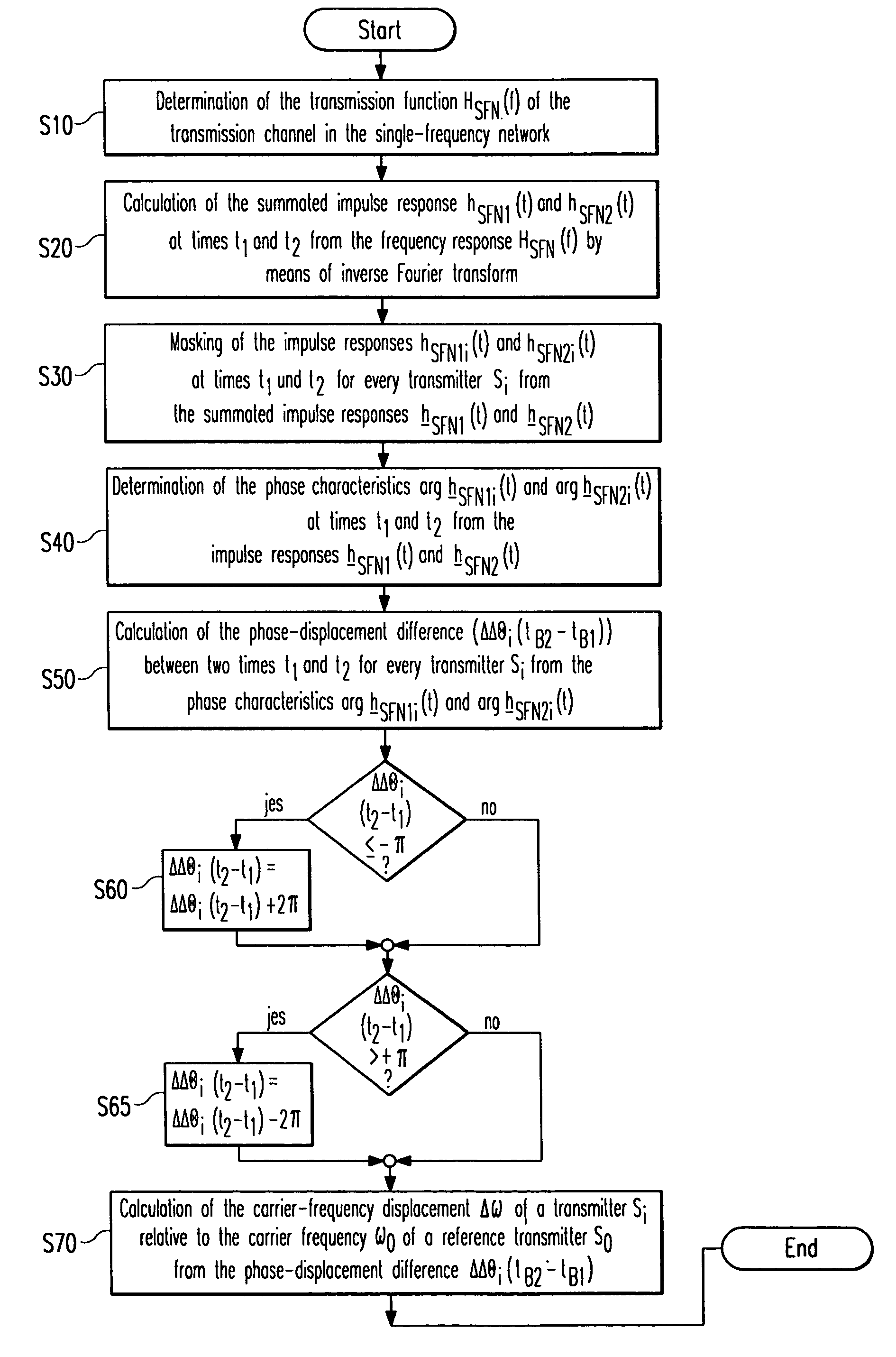Method and device for monitoring carrier frequency stability of transmitters in a common wave network
a transmitter and carrier frequency technology, applied in broadcast transmission systems, digital transmission, electrical equipment, etc., can solve the problems of undesirable reception, non-uniform monitoring of the carrier frequency of all the transmitters participating in the single-frequency network, and synchronicity evaluation
- Summary
- Abstract
- Description
- Claims
- Application Information
AI Technical Summary
Benefits of technology
Problems solved by technology
Method used
Image
Examples
first embodiment
[0051]The first embodiment for monitoring the carrier-frequency stability of transmitters in a single-frequency network is therefore derived from the procedural stages presented below, as shown in FIG. 4A:
[0052]In procedural stage S10, the transmission function HSFN(f) of the transmission channel of the individual transmitters S0, . . . , S1, . . . , Sn of the single-frequency network to the receiver device E is determined. For this purpose, the characteristic of the transmission function HSFN(f) can be determined from the coefficients of the equaliser integrated in the receiver device E, which, in the case of an equaliser adapted to the transmission channel, correspond to the coefficients of the transmission function HSFN(f).
[0053]In procedural stage S20, the characteristics of the associated complex, summated impulse responses hSFN1(t) and hSFN2(t) at the two times tB1 of the time slot ΔtB1 and tB2 of the time slot ΔtB2 are calculated by means of discrete, inverse Fourier transfor...
second embodiment
[0064]Since, over the time t, additional phase changes resulting, for example, from phase noise, can be superimposed over the phase displacement Δθi(t) of the received signal ei(t) of the transmitter Si, as a result of a carrier-frequency displacement Δωi of the transmitter Si relative to the reference transmitter S0, as illustrated in FIG. 5A, phase disturbances of this kind should be removed from the phase-displacement difference ΔΔΘi(tB2−tB1) of the phase displacement of the transmitter Si relative to the reference transmitter S0 between the two observation times tB1 and tB2. This adjustment is provided in the method according to the invention for monitoring the carrier frequency stability of transmitters in a single-frequency network as illustrated in FIG. 4B.
[0065]The first embodiment shown in FIG. 4A differs from the second embodiment shown in FIG. 4B, in that the phase-displacement difference ΔΔΘi(ΔtB) of the phase displacement of the transmitter Si relative to the reference ...
PUM
 Login to View More
Login to View More Abstract
Description
Claims
Application Information
 Login to View More
Login to View More - R&D
- Intellectual Property
- Life Sciences
- Materials
- Tech Scout
- Unparalleled Data Quality
- Higher Quality Content
- 60% Fewer Hallucinations
Browse by: Latest US Patents, China's latest patents, Technical Efficacy Thesaurus, Application Domain, Technology Topic, Popular Technical Reports.
© 2025 PatSnap. All rights reserved.Legal|Privacy policy|Modern Slavery Act Transparency Statement|Sitemap|About US| Contact US: help@patsnap.com



